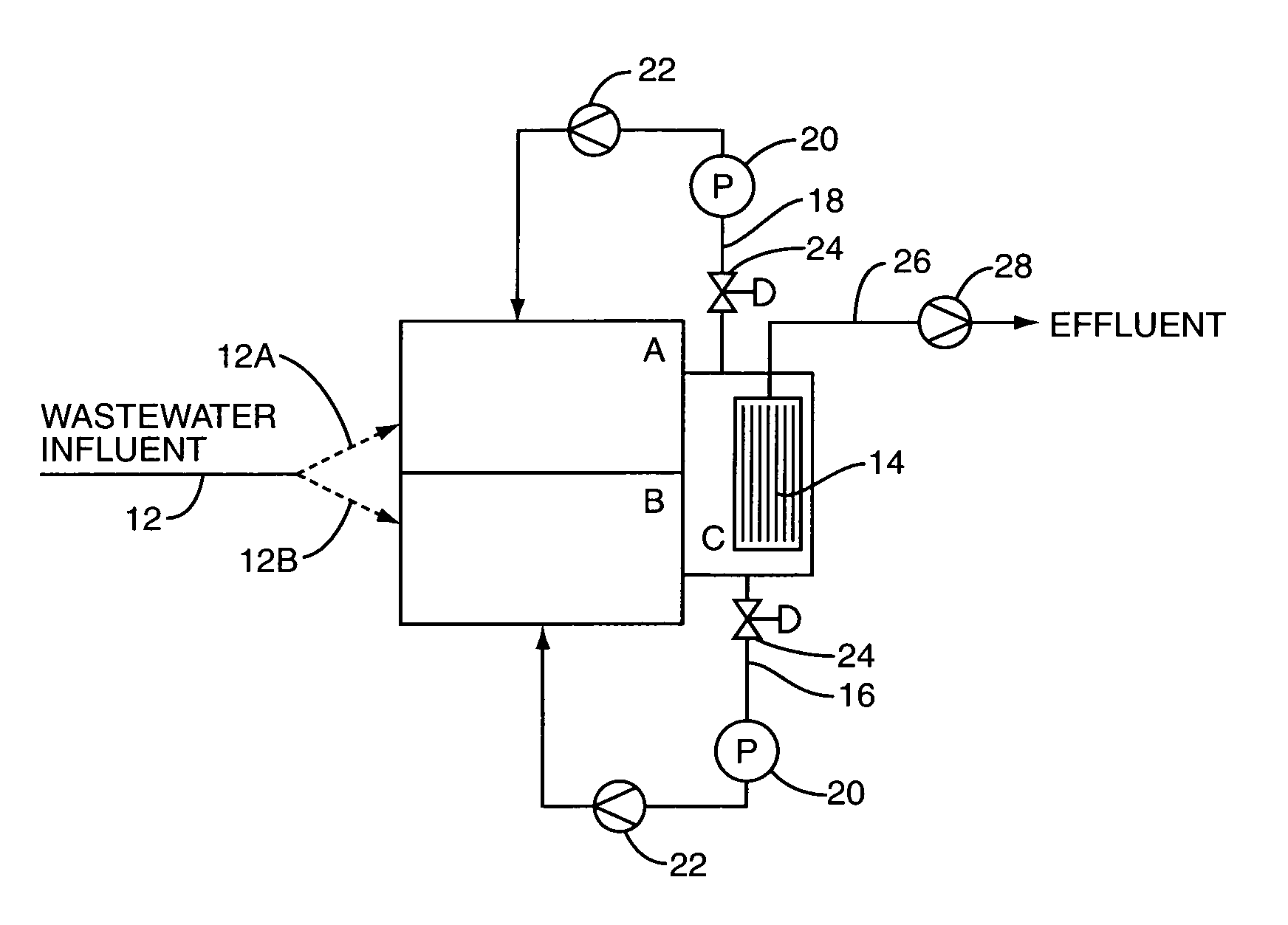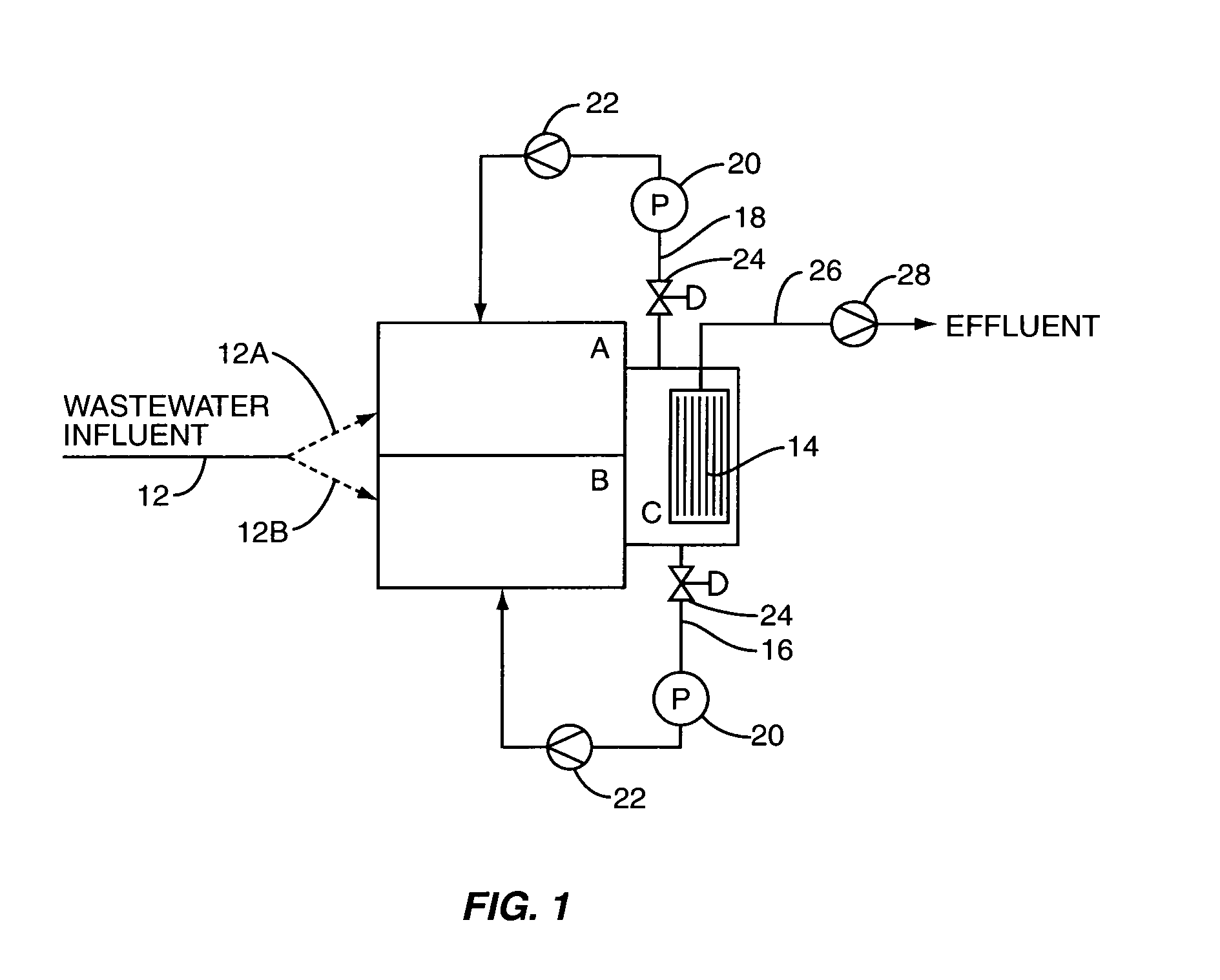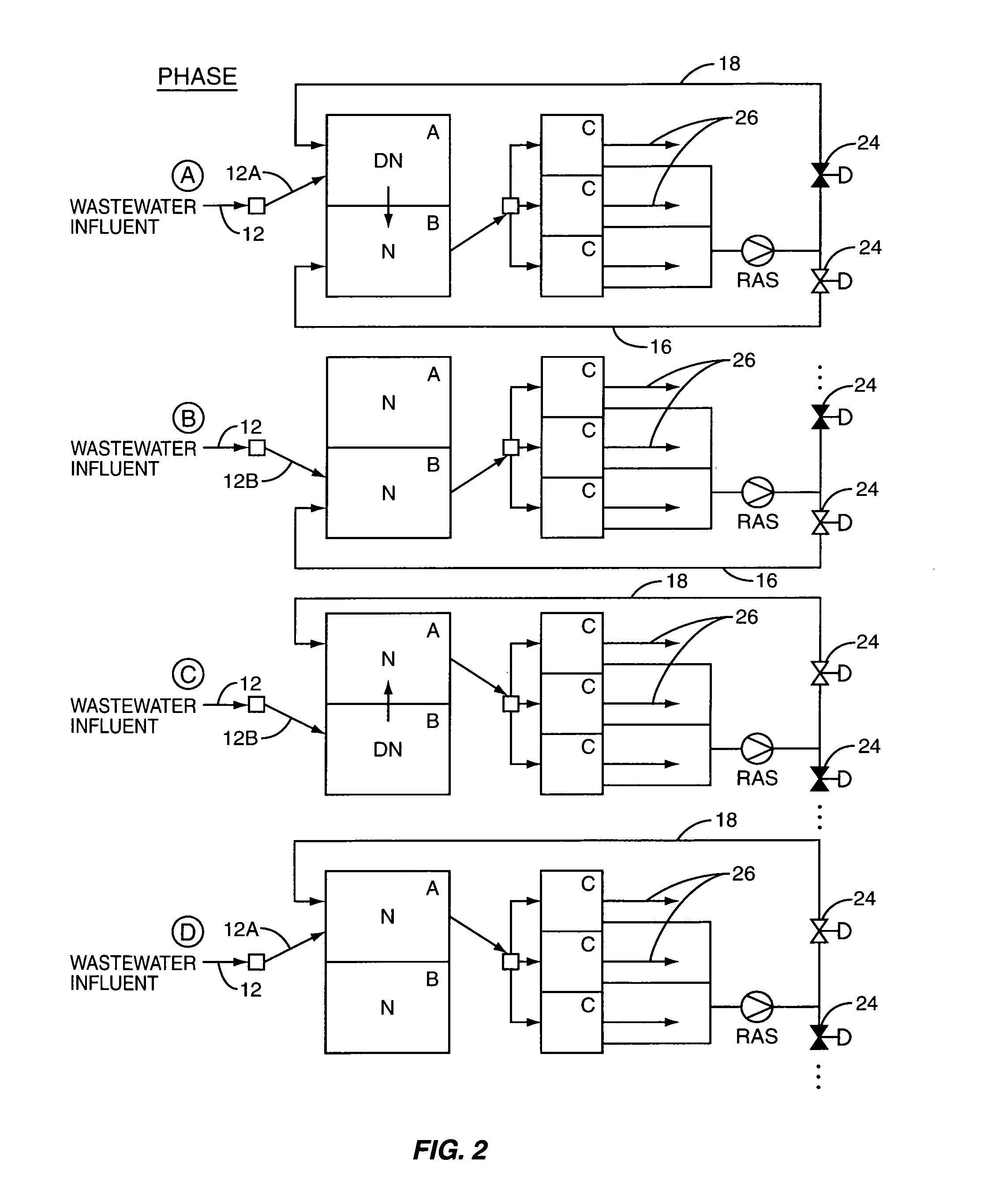Method and system for nitrifying and denitrifying wastewater
a wastewater and denitrification technology, applied in the field of wastewater treatment, can solve the problems of compromising the denitrification rate and overall effectiveness of the denitrification process, difficult nitrogen removal for municipalities and sewer authorities, and difficult to achieve cost-effective and efficient nitrogen removal in a cost-effective manner, so as to reduce or minimize the dissolved oxygen concentration, reduce or minimize the effect of dissolved oxygen concentration
- Summary
- Abstract
- Description
- Claims
- Application Information
AI Technical Summary
Benefits of technology
Problems solved by technology
Method used
Image
Examples
Embodiment Construction
[0014]Typically, wastewater influent includes ammonia nitrogen, NH3—N. To remove ammonia nitrogen, a two-step process is called for, nitrification and Denitrification. First, the nitrification step entails converting the ammonia nitrogen (NH3—N) to nitrate and a very small amount of nitrite, both commonly referred to as NOx. There are a number of conventional processes that can be utilized in a nitrification process. For example, many conventional activated sludge wastewater treatment processes accomplish nitrification in an aerobic treatment zone. In an aerobic treatment zone the wastewater containing the ammonia nitrogen is subjected to aeration and this gives rise to a microorganism culture that effectively converts the ammonia nitrogen to NOx. Once the ammonia nitrogen has been converted to NOx, then the NOx containing wastewater is typically transferred to an anoxic zone for the purpose of denitrification. In the denitrification treatment zone, the NOx containing wastewater is ...
PUM
| Property | Measurement | Unit |
|---|---|---|
| detention time | aaaaa | aaaaa |
| time duration | aaaaa | aaaaa |
| time duration | aaaaa | aaaaa |
Abstract
Description
Claims
Application Information
 Login to View More
Login to View More - R&D
- Intellectual Property
- Life Sciences
- Materials
- Tech Scout
- Unparalleled Data Quality
- Higher Quality Content
- 60% Fewer Hallucinations
Browse by: Latest US Patents, China's latest patents, Technical Efficacy Thesaurus, Application Domain, Technology Topic, Popular Technical Reports.
© 2025 PatSnap. All rights reserved.Legal|Privacy policy|Modern Slavery Act Transparency Statement|Sitemap|About US| Contact US: help@patsnap.com



